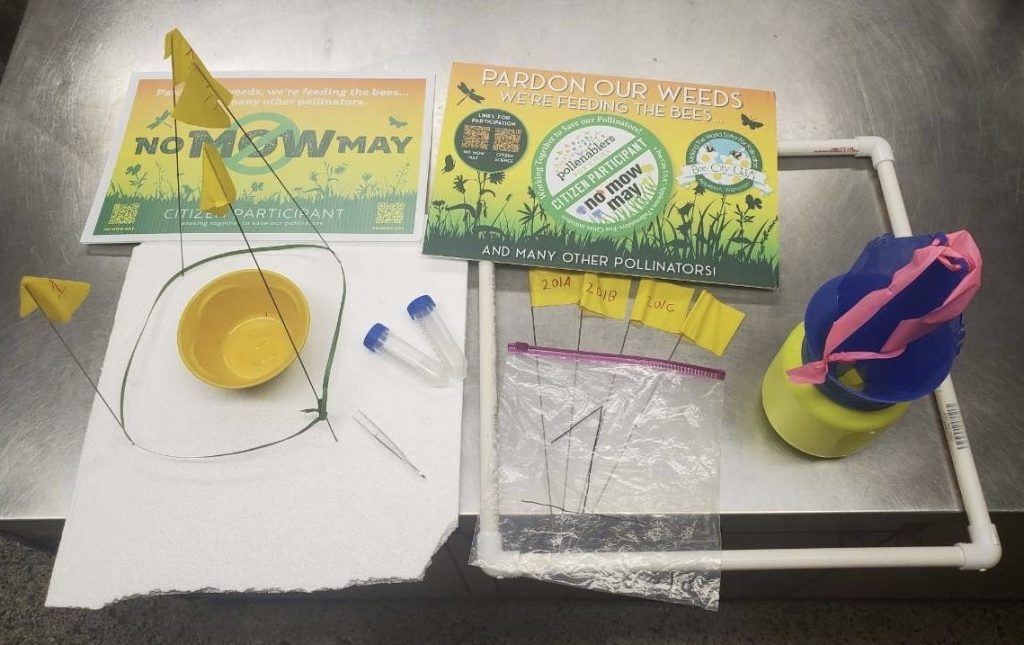Two Views of NoMowMay
NoMowMay in the New York Times!
The purpose of my product is to educate the public about the importance of No Mow May and to highlight the growth of it in the past few years. The intended audience for this product is citizen scientists or anybody interested in learning about science at a more digestible level. I have included a poster of the No Mow May article feature in the New York Times, an overlayed picture of a Now Mow May sign from 2021, and a picture of myself. My hope is that this will show the humanity behind the sciences. Science is something that can be a scary and sensitive optic as observed through the COVID-19 pandemic, but not all science has to be scary. For this reason, I have included a picture of a No Mow May kit that we could give to citizen scientists. It includes everyday objects that could be found in a home.

NoMowMay 21: How Citizen Science Projects Can Potentially Decrease the Effects of Social Isolation
No Mow May is a citizen science initiative popularized in recent years to encourage lawn owners to not mow their lawns during May to increase pollinator diversity and abundance. During the 2021 No Mow May continuation study conducted in Appleton, WI, COVID-19 caused many citizen scientists to remain indoors and socially isolate. Previous research has proven that prolonged social isolation can lead to serious neurodegenerative diseases such as Alzheimer’s disease. To try to mitigate the effects of social isolation, No Mow May was studied as a potential means of increasing social interactions and decreasing social isolation among the 2039 citizen scientist participants. No previous research had used citizen science as a means of creating social interaction environments. To measure levels of social engagement and isolation, a survey was sent to the citizen scientist participants at the conclusion of May addressing prominent research questions about the citizen scientist participant’s change in social interactions due to COVID-19, their change in social interactions due to participating in No Mow May, and their change in daily tasks during the pandemic. After the survey was concluded, the questions on the survey were broken into two broad categories, which either encompassed “citizen scientist participant’s social interactions” or “citizen scientist participant’s self-reported measure of social isolation.” The two categories of questions when compared to one another yielded 72 unique comparisons, which of 16 were determined significant using a fisher test. The main determination from the data being that a citizen science project like No Mow May has the potential to decrease a person’s social isolation. Further research needs to be conducted to figure out whether the brain is positively impacted by these social interactions and if the negative effects of the social isolation experienced are being mitigated.
